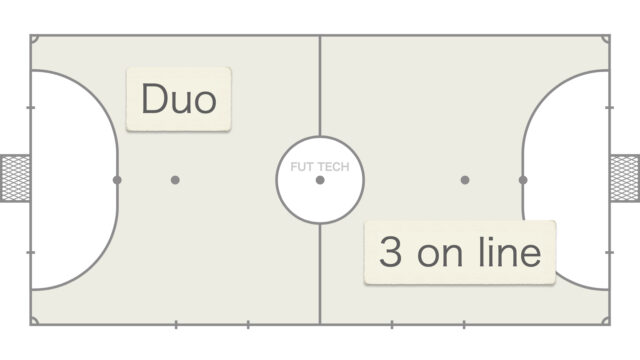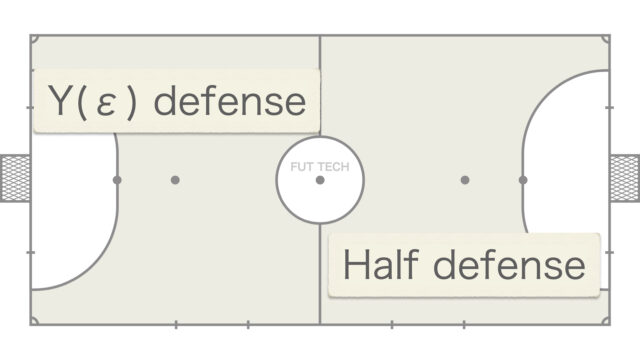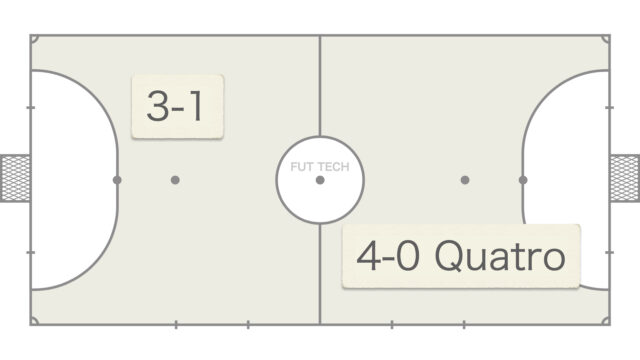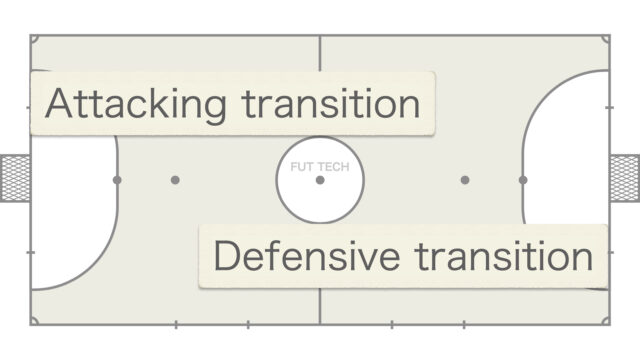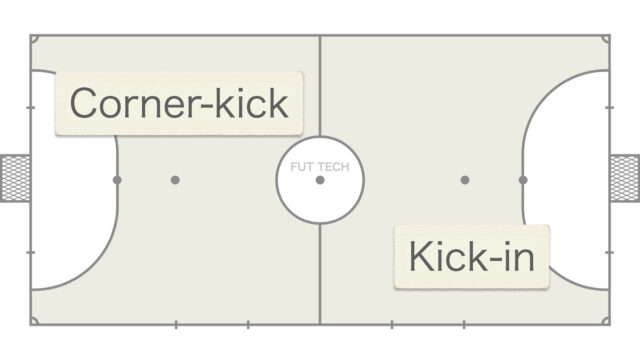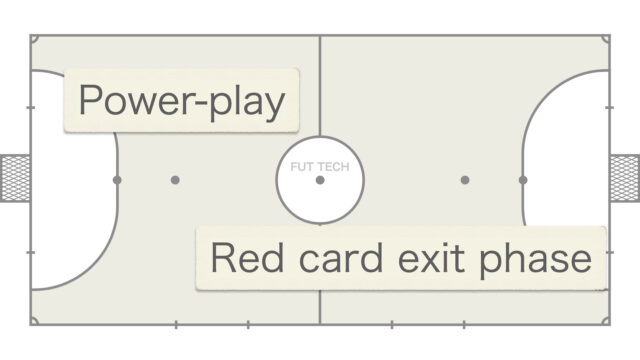Where can I learn futsal tactics?
The answer to this question is our website, FutsalTech.
Unfortunately, information on futsal tactics is difficult to obtain.
In FUTTECH, futsal tactics are explained from an objective point of view, and the best solution regarding futsal is presented to you.
In this page, we explain the classification of Futsal phases, which cannot be avoided when learning Futsal tactics.
This classification of phases is also used in the classification of articles on this site, so please click the button of your interest at the top of the site and refer to the list page of articles related to the item.
- What are the four major phases of futsal?
- What is the set-pieces phase of futsal?
- What is the special phase of futsal?
- The Three Fundamental Elements Underlying All Futsal Tactics
- Creating a Play Model for Futsal Tactics
- Understanding Futsal Terminology Facilitates Tactical Discussions
- The Importance of Rules in Futsal Tactics
- Conclusion
What are the four major phases of futsal?
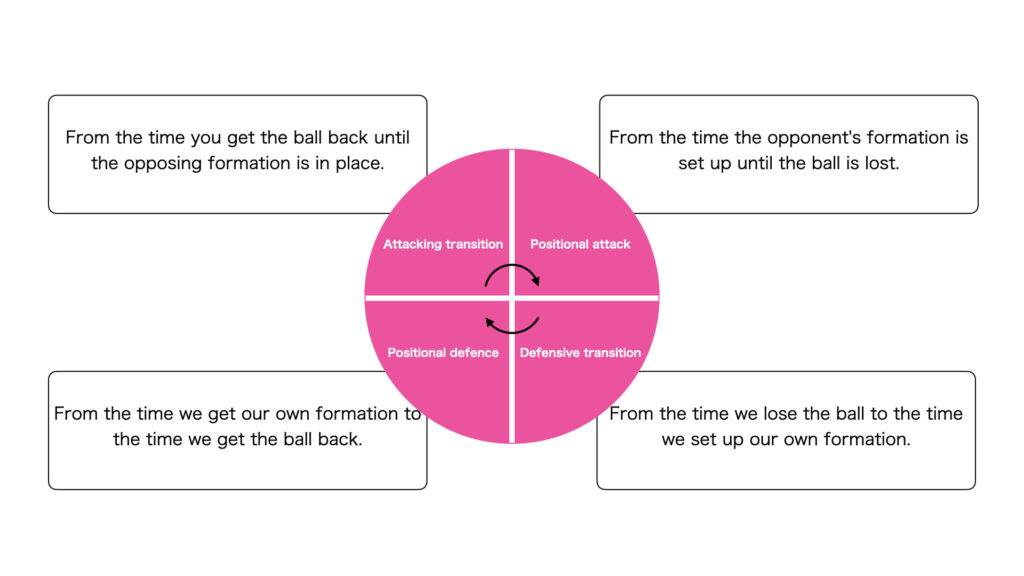
As we reported at the beginning of this section, grouping the elements of futsal facilitates discussion of futsal tactics.
If we group futsal based on its game structure, we can divide it into the following four phases
- Positional Attack
- Defensive transition
- Positional Defence
- Attacking transition
The above four phases are generally called the four major phases, and the game of futsal consists of four alternating phases.
Each of the four major phases will now be explained in detail.
①Positional attack

In futsal, attacking in place refers to a phase in which the ball is held by the team in possession and the opponent’s well-organized defensive formation is attacked.
When a team fails to score in transition and the opponents have established their defensive formation, it is a phase of attacking in place.
Please read the full list of articles on positional attack.
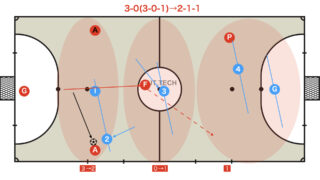
②Defensive transition
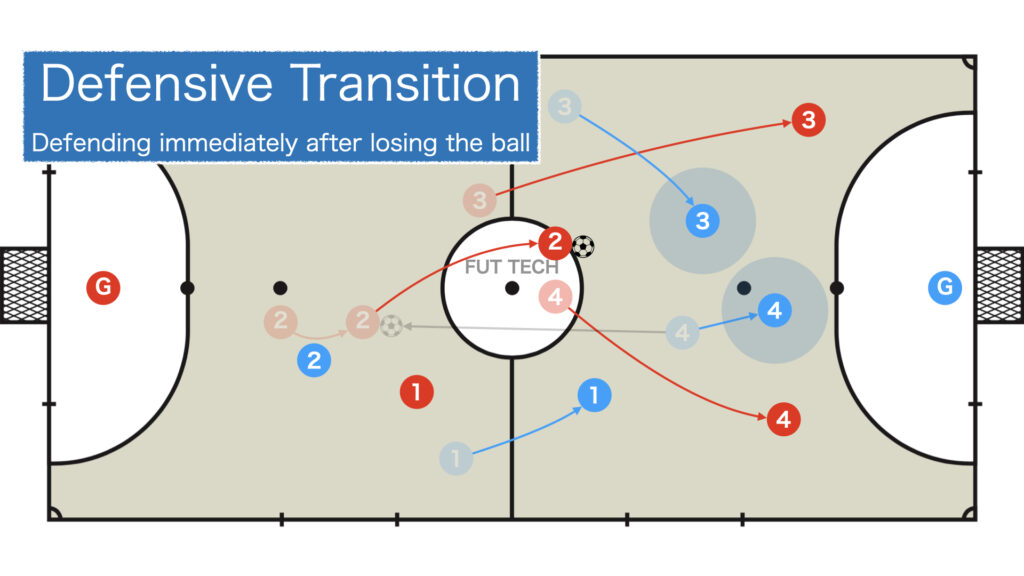
Transition defense refers to the phase from the time the ball is lost to the opponent until the defensive formation of the own team is set up.
It is also the phase in which the opponent is counter-attacking, so it is also referred to as being counter-attacked.
The first priority of transition defense is to prevent the opponent from counter-attacking.
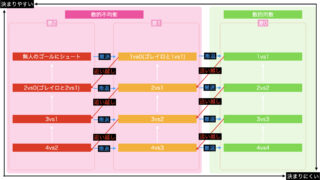
③Positional defence
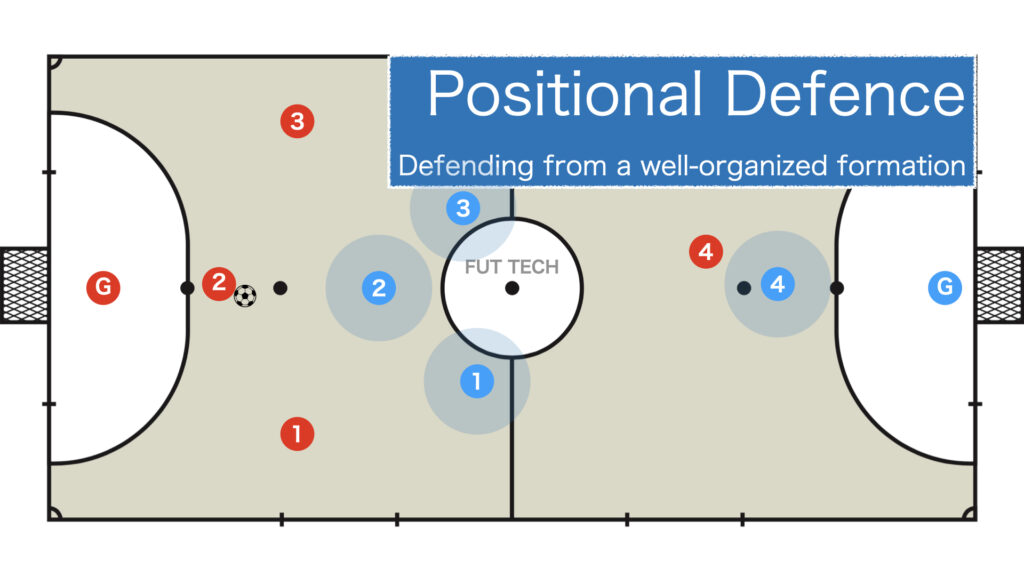
Defending in place in futsal is the phase of defending when the opposing team has the ball and the defensive formation is in place.
Defending in place is the opposite of attacking in place, and it is necessary not only to think about not scoring, but also to try to win the ball.
This includes pressing from the front, and defending in the half by pulling back to the halfway line.

④Attacking transition
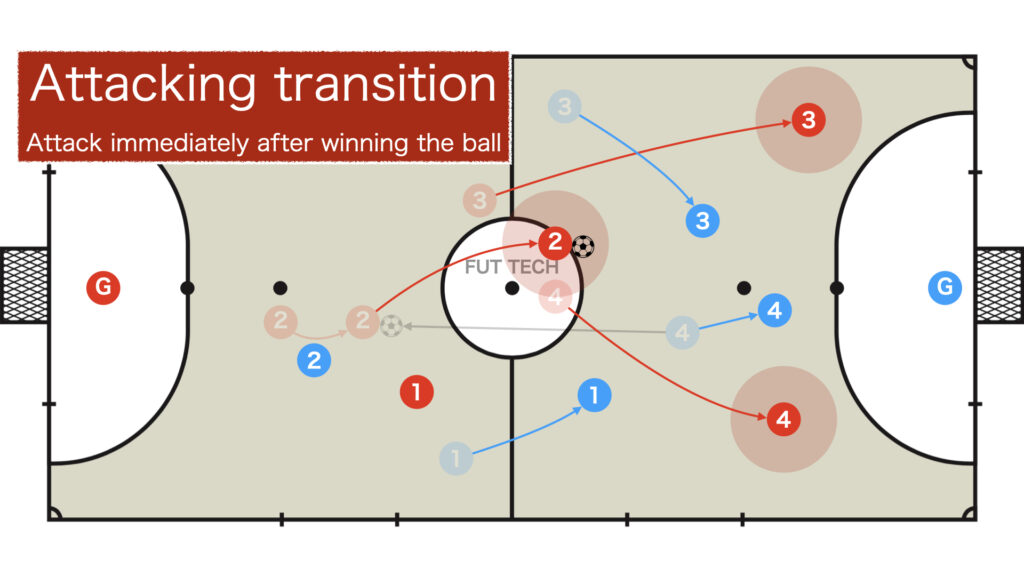
The transition attack in futsal refers to the phase from when the ball is won to when the opponent’s defensive formation is set up.
The transition attack is also the phase from defense to attack, also known as the counter attack.
Think of a two-on-two or three-on-two situation, which results from a quick counter-attack.
It is said that about 50% of the goals in futsal are scored from transition attacks.

What is the set-pieces phase of futsal?
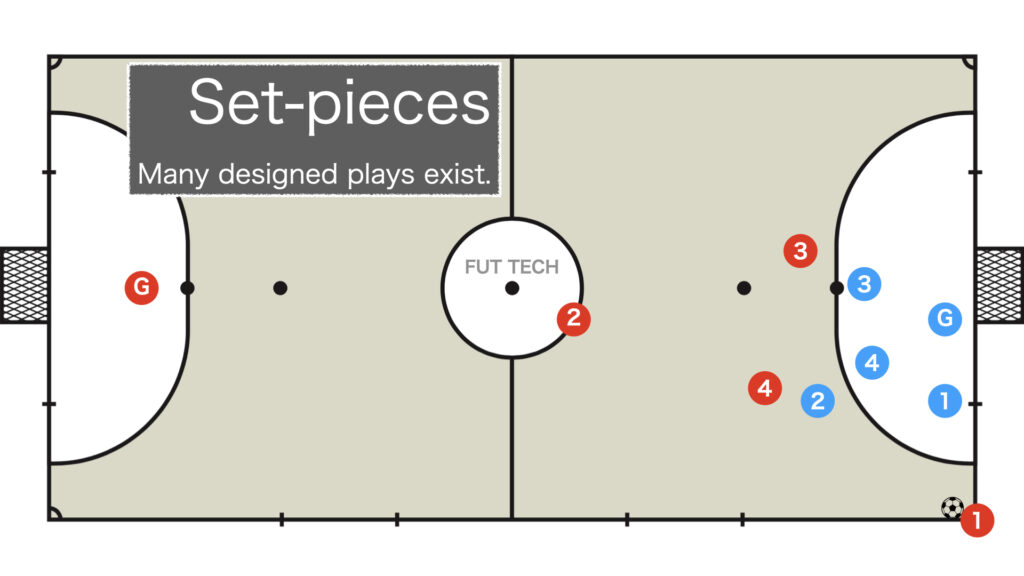
We have written about the four major phases of futsal, but you may be wondering which phases include corner kicks and kick-ins.
The phase in which play is resumed after an interruption, such as a kick-in after the ball has gone off the court, is called a set-pieces.
In futsal, set-pieces are phases that appear during breaks in play, and four phases are transitioned before and after a set-pieces.
There are six set-pieces
- Kickoff
- Clearrance(goal kick in soccer)
- Corner kick
- Free kick
- Enemy kick-in(kick-in in enemy territory)
- Own kick-in(kick-in in own half)
The set-pieces phase is said to be the second most likely phase to score goals after transition, with many teams using sign play to design their play.
We have a page listing articles on set plays.
Set-pieces phases are viewed in different ways. Many consider a set-pieces that takes place above a certain line to be a set play phase, while many consider a set-pieces below that line to be a positional attack phase. In other words, a set-pieces can be viewed as an in-play, in-place attack.
What is the special phase of futsal?
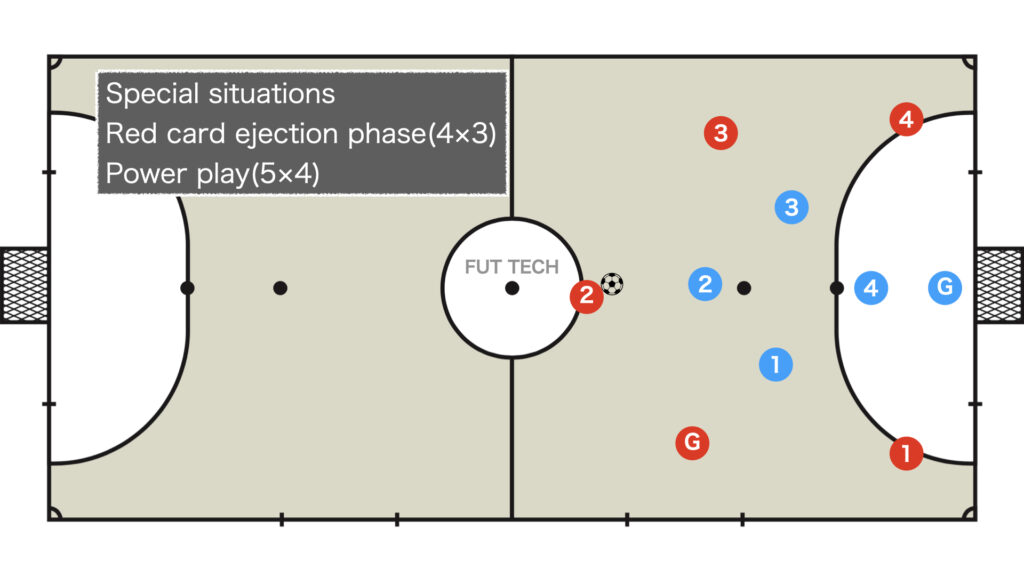
The two specific situations in futsal are as follows.
In the red card ejection situation, the field players decrease by one, making it 4 against 3, and in the power play situation, the goalkeeper joins the attack, making it 5 against 4. Therefore, the game unfolds differently from normal futsal.
Special situations in futsal are often considered separately from the four major situations as they involve numerical imbalance and less mobility.
There is a list page for articles on special situations, which I encourage you to view.
Some people consider special situations as transitional situations due to the numerical imbalance. However, due to differences in mobility and fluidity, the essence of offense and defense in the two situations differs significantly. We consider special and transitional situations separately.

The Three Fundamental Elements Underlying All Futsal Tactics
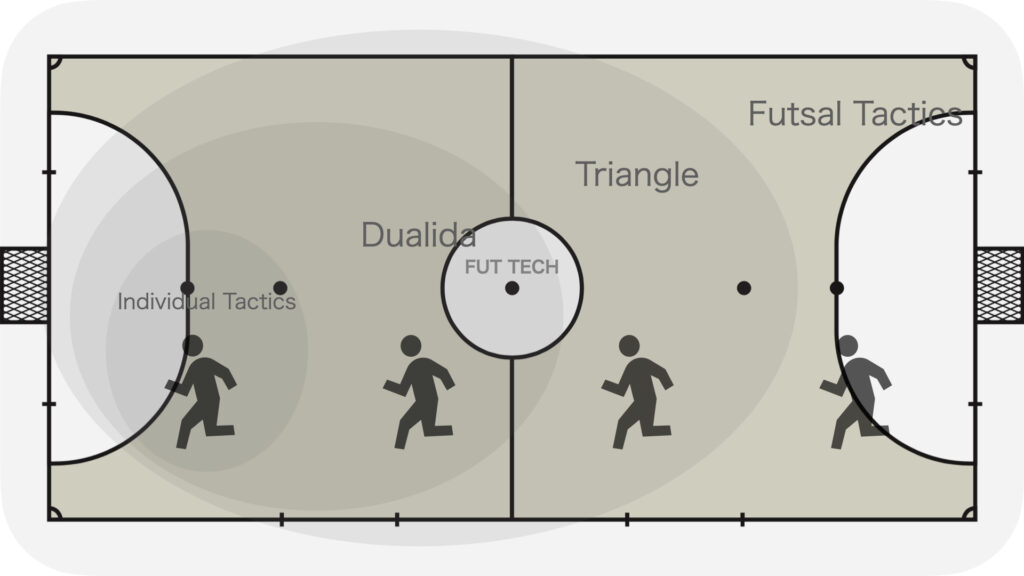
There are fundamental futsal tactics that apply to all situations.
We call these the “Foundations of Futsal.”
The foundations of futsal mainly consist of the following three elements:
Individual tactics are strategies to enhance an individual’s abilities, including dribbling and one-on-one defense.
Duo refers to the tactics formed by two players, such as one-twos or parallels.
Organizational tactics can be thought of as combinations of duos, making duo relationships the most critical in futsal tactics.
Threesome is “Duo +1”, an extension of duo tactics, a group tactic like pivot plays or 3 on line.
Those interested in the foundations of futsal should visit the list page for articles on the foundations of futsal.
Creating a Play Model for Futsal Tactics
Here, we introduce how to unify team tactics.
One recommended method is to create a play model.
A play model is a document that lists the team’s play principles for each situation and court area.
In other words, it’s a linguistic representation of the team’s objectives and policies.
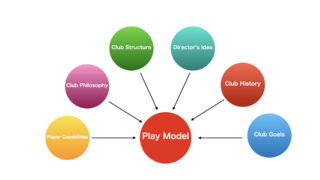
Understanding Futsal Terminology Facilitates Tactical Discussions
Knowing futsal terminology is essential for discussing tactics.
Have you ever struggled to explain your profession or field of study to someone because they didn’t understand the jargon?
The importance of knowing futsal terminology is the same.
Since futsal is a sport that originated overseas, the definitions of futsal terminology are not always unified. Also, there are about eight synonymous expressions for line cut, among other varied expressions.
Therefore, the definition of terms can vary from person to person or be ambiguous, but at least within your team or community, it’s recommended to unify the terminology.
There are often different explanations of futsal terms on websites. When in doubt, approaching the terms in their original Spanish or Portuguese can be important. The Futsal Tech terminology explanation page defines futsal terms based on their etymology and the views of professional futsal coaches.
The Importance of Rules in Futsal Tactics
Understanding the rules of futsal is essential, albeit often overlooked, for discussing tactics.
In the past in Brazil, set-pieces were performed with throw-ins instead of kick-ins, significantly changing the approach to set-piece tactics from today.
If the competition rules change significantly, it’s necessary to revise tactics accordingly.
Conversely, this means that the philosophy behind futsal tactics doesn’t change unless the rules do.
Remembering the following six rules should suffice:
- 4-second rule
- Back pass
- Player substitution
- Criteria for fouls, yellow cards, and red cards
- Red card ejection situation
- Foul count
- Direct goal possibility from each set-piece
There were rule revisions in the 2020/2021 season. Notably, the removal of restrictions on the kicking foot for set-pieces has led to the development of new tactics centered around tricky set-plays.
Conclusion
This article has explained various aspects of futsal, including the four major situations, the creation of play models, and the importance of understanding futsal terminology.
Such information has traditionally been understood only by coaches, not communicated to players. However, these topics are invariably covered in coaching courses of B grade and above.
Identifying problematic situations when analyzing your play or your team can make it clear what needs to be practiced.
This site categorizes articles into the following five categories, which I hope you will find useful to refer to.
- Foundations
- Four Major Situations – Positional Attack
- Four Major Situations – Positional Defence
- Four Major Situations – Transition
- Set-pieces
- Special Situations
I hope this will deepen your understanding of futsal tactics.
